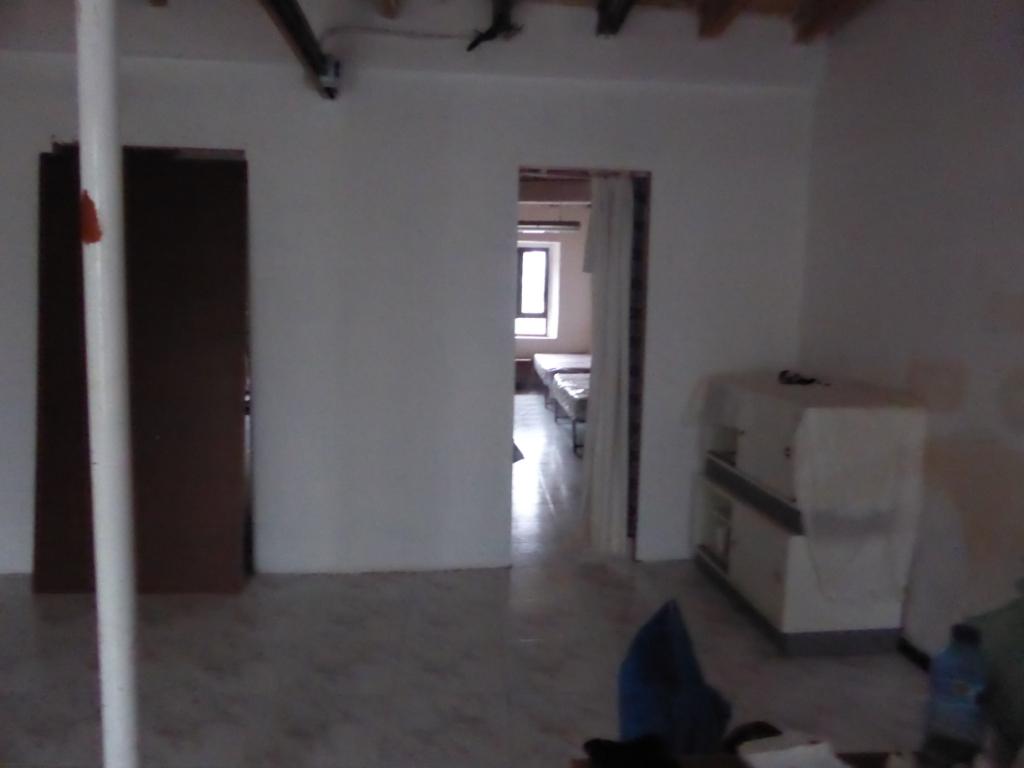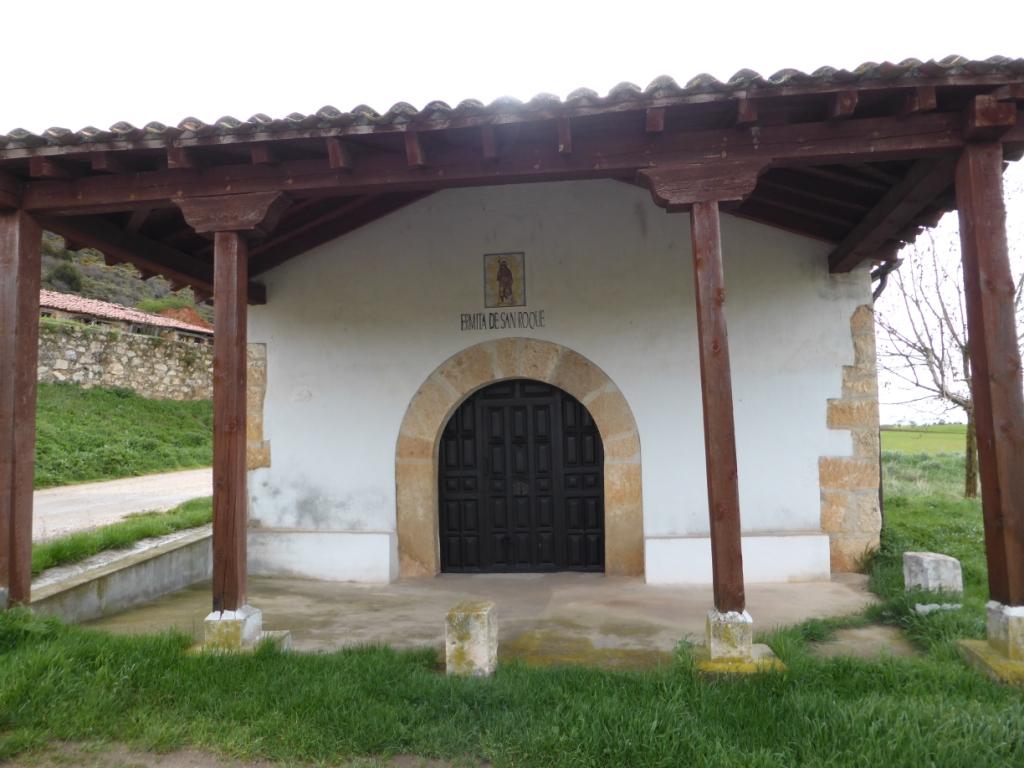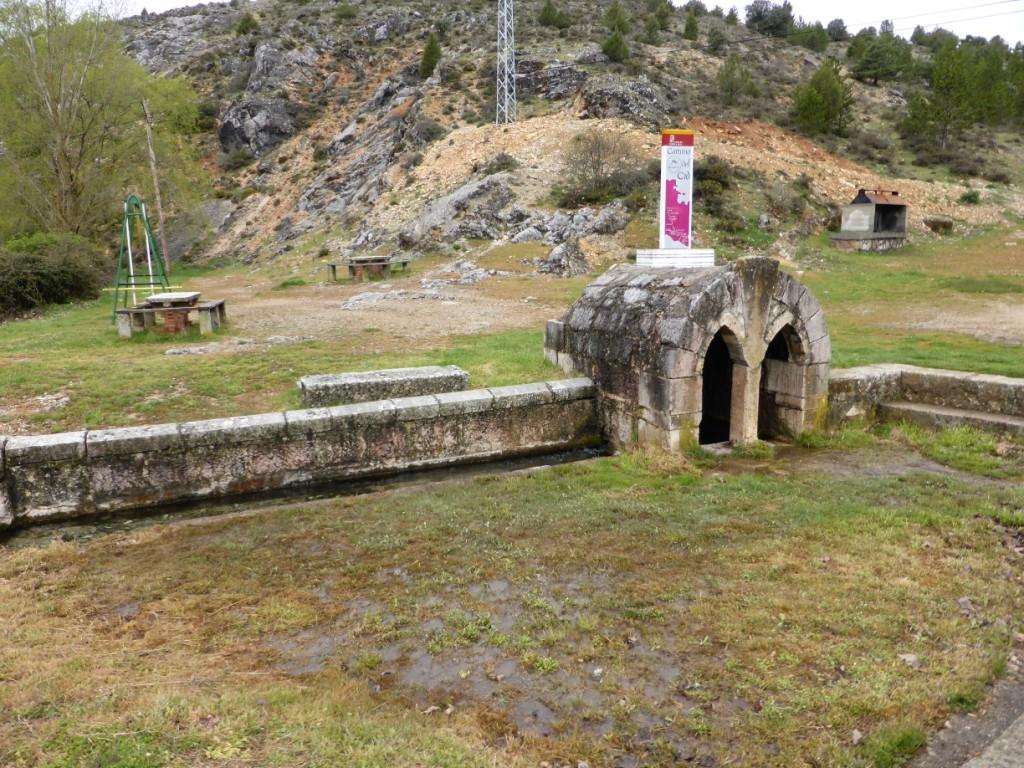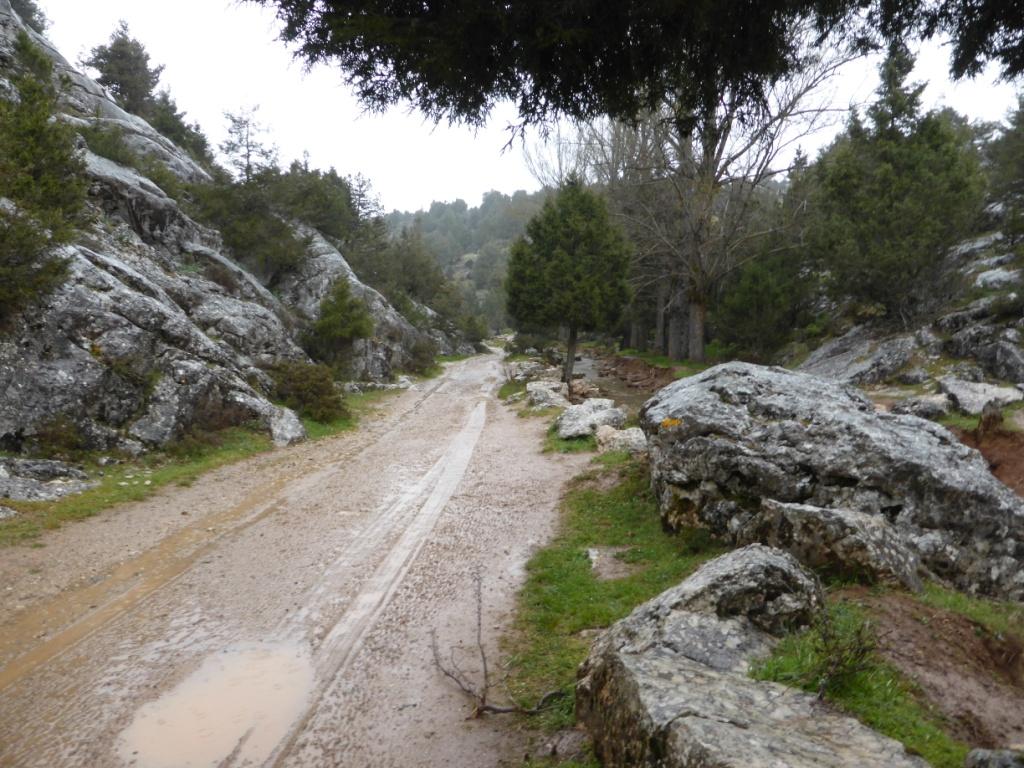Camino moments: Qunitanarraya to Santo Domingo de Silos.
The revival of the Camino de Santiago at the end of the 20th Century has meant that pilgrims today are much less likely to be considered loonies than they were 30 or 40 years ago. This is unfair: it is still pretty nutty to set off from a comfortable home to walk for a month or so with only what you have in your rucksack: to walk day after day in whatever the weather, taking pot-luck on where you might sleep at night and on the conditions in which you sleep.

The albergue, Quintanarraya. No heating, no hot water, and very empty, but a place to sleep in the pouring rain.
Strange behaviour.
So, if the Camino is, in itself, a strange behaviour it is not surprising that pilgrims have some eccentric habits. “Out of the box” has become a current expression which denotes the gift of being able to think in a way which is creative and brain storming. Ideas which are unusual and come from removing the limits we impose on our thinking are usually like the brainwaves we have when asleep (pretty useless) but, once in a while, they may point to the opening of a new paradigm. This is what “eccentric” means, “out of the box”. The Camino is “out of the box”. I much prefer the term “eccentric” because, geometrically, a centre can be anywhere. It does not need to start in a box which is rather limiting when the intention of the prase is to achieve thinking which is liberated. Perhaps this is a digression.
- Cowslips near Silos.
A Love poem.
However, one of the eccentric behaviours on the camino is just the sort of lapse which happened in the last paragraph. As I walk, even if I intend to be contemplative, my thoughts wander and produce eccentric ideas. For instance, I was thinking of Robert Burns’ poem, “My love is like a red, red rose….” and began to wonder how that might be translated for the Dutch. So I try to hum, “My love is like a big, big tulip…” eventually this forms into a little poem.
My love is like a Tulip
Ah, Mogens, my tulip, cooling cold
Such heat of love
You melt the clogs in my heart
Which help me run with windmill-whirring feet.
Free-falling like red Edams in Apeldoorn.
Into the greenhouse of your arms –
My Coffee House of Dreams, sweet as capsicum.
I am your Zuiderzee, and you, my dyke:
Elegant and straight, a fortress against the oceans
Of desire in my canals which long for your black petals.
I offer you this bulb of love, dear Mogens.
Tell me soon you will ride my bike along the towpaths of our lives.
Compassion
This, then, is the context, random and unrestrained, in which my intention to remain in contemplative prayer finds itself on a Camino. Part of the practice of such prayer is to notice what is going on in my mind and refocus it, rather than put a stop to it. In a case like this my refocusing would certainly be on Love itself which I would just let sink into my heart, creating more freedom still but with a gentle nudge towards maintaining a sense of God’s presence.
Compassion has been a recurring theme on my Caminos and on the day I left the albergue in Quintanarraya I’d been reading John’s gospel, the one I’d found in a park. Possibly I’d been reading the story of the Healing at Bethesda (John 5: 1-24). This is the story where the paralysed man has been waiting for 38 years to be cured. Many read the story as one which demonstrates Jesus’ compassion since he picks out this man who has been there so long and asks him if he wants to be healed. My Camino mind, the one which translates Burns into Dutch, read the “Do you want to be healed?” as “Do you really want to be healed. Do you remember why you first came here? Have you accepted your paralysis and are still here doing nothing more about it than being resigned to sit around every day?” So the man, hearing this question as a rebuke offers the excuse that nobody helps him. Jesus replies, “Well, help yourself. Pick up that bed of yours and walk.”
Discontinuous thinking – a Camino luxury.
Sudden pauses in thinking, resuming somewhere else only vaguely related, are often interpreted as a sign of senility. They are, in fact, part of our life at all stages but we are trained to think in continuous lines and, probably straight, logical lines. The Camino is a place where time becomes suspended and so does the need to discipline our thinking (or our emotions). On this walk to Silos I was hit by one of those Camino moments when I think I have had an insight. Following my reflection on Jesus’ attitude towards the paralytic at the pool in Bethesda, I jumped to the gospel teaching on wealth, which is hardly mentioned in John’s gospel which was my Camino reading. I moved from thoughts in my head to that place in my centre where movements stir my spirit, where there is an energy to change and a desire not to sit still. I was filled with a compassion for those who have no food and no money while in some way, not visualising, but being present with the One who cannot move and is paralysed by want: by want of the minimum to be, to be as those of us who are free to think of other things and do, in freedom, what we choose. this One is many, maybe most of us. I began to hurt with this compassion and knew, as I still know, the complete lie, the fundamental untruth of Christianity in Europe and in the North of America which sleeps comfortably with its reserves of wealth while preaching love and compassion. If we have 100’s of euros stored for our future we cannot have compassion. We cannot have money to spare and let others die for lack of it. That is the gospel which we squirm around to justify and defend our right to our standard of living which we make the sole criteria by which we judge the effectiveness of our governments. I have a small amount of capital. I decided that day to aim for zero capital.

The sculpture in Manzanares Park, Madrid, which shows discontinuous eccentric thinking. I think it is a woman.
Of course, now that I have returned from the Camino, I find it hard to recapture the force of that moment. My environment prefers me to think in its patterns and makes life very awkward for me if I don’t. The comforts I was happy without on the Camino become necessities, the “letting go” which I had learned in not planning for food or shelter is replaced by routines of shopping, regular meals, television, central heating and a car. “Well, to be realistic, you have to be realistic, you can’t live like that all the time.” But in my loony Camino, loose moments I connect with that compassion which hurt and know the lie I live, knowing that most human beings have no choice: and no financial savings at all.
[mapsmarker layer=”30″]




